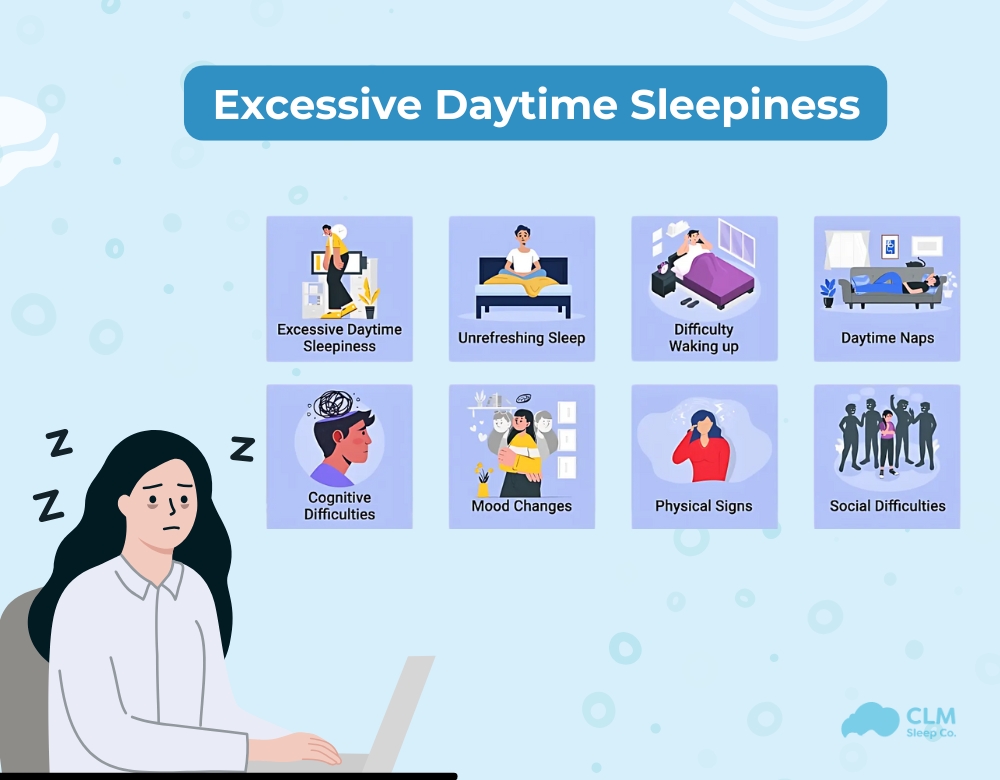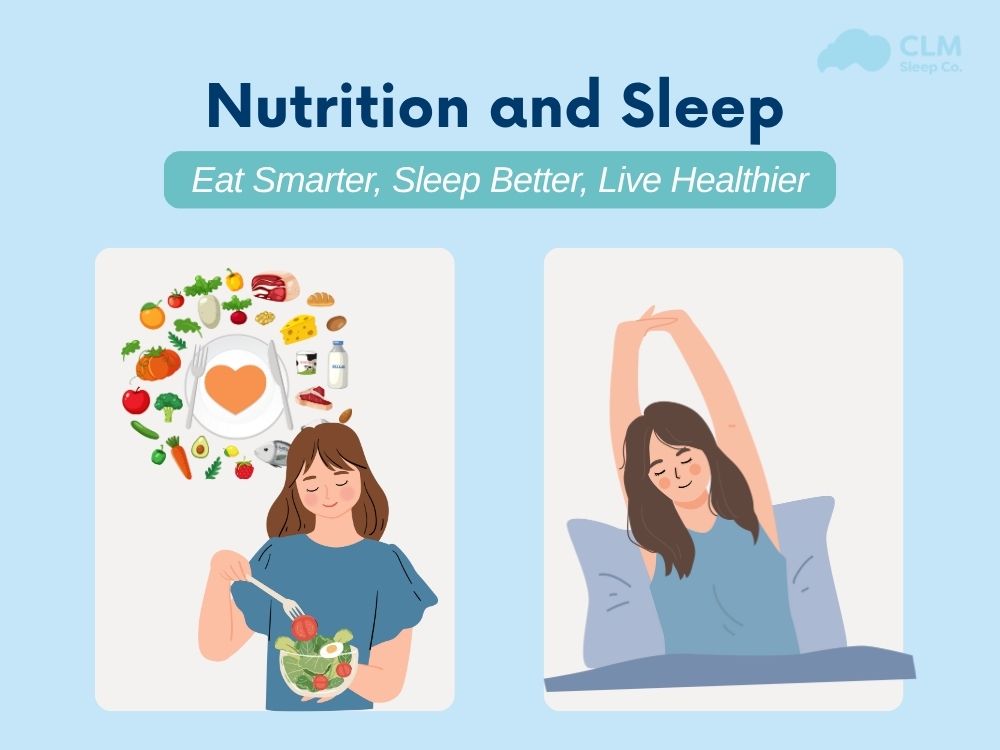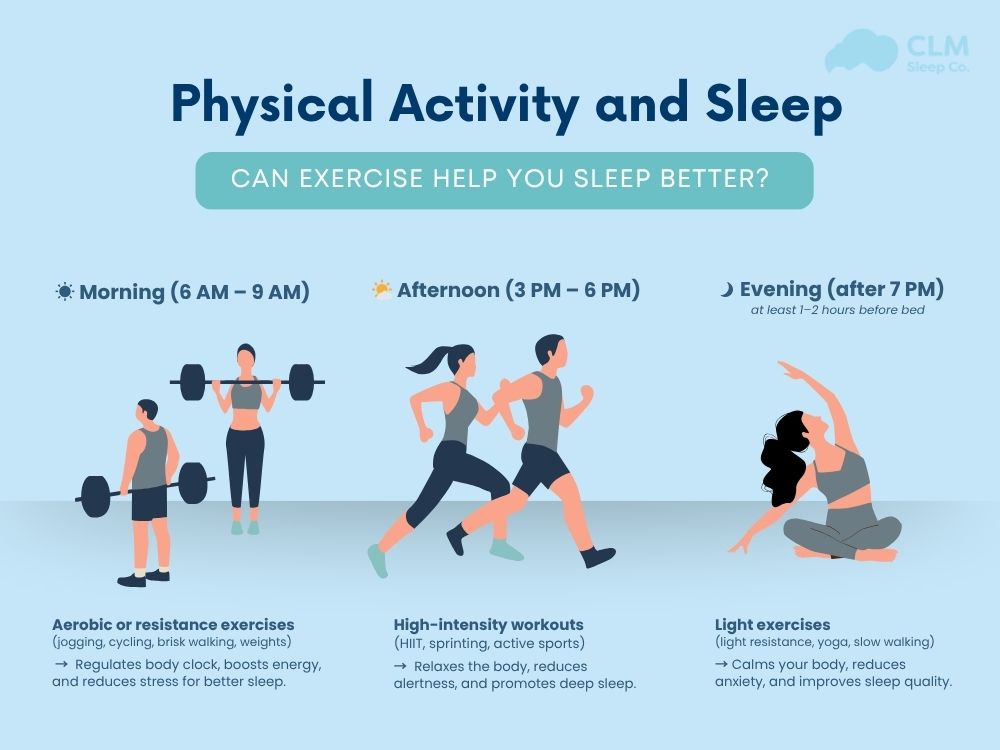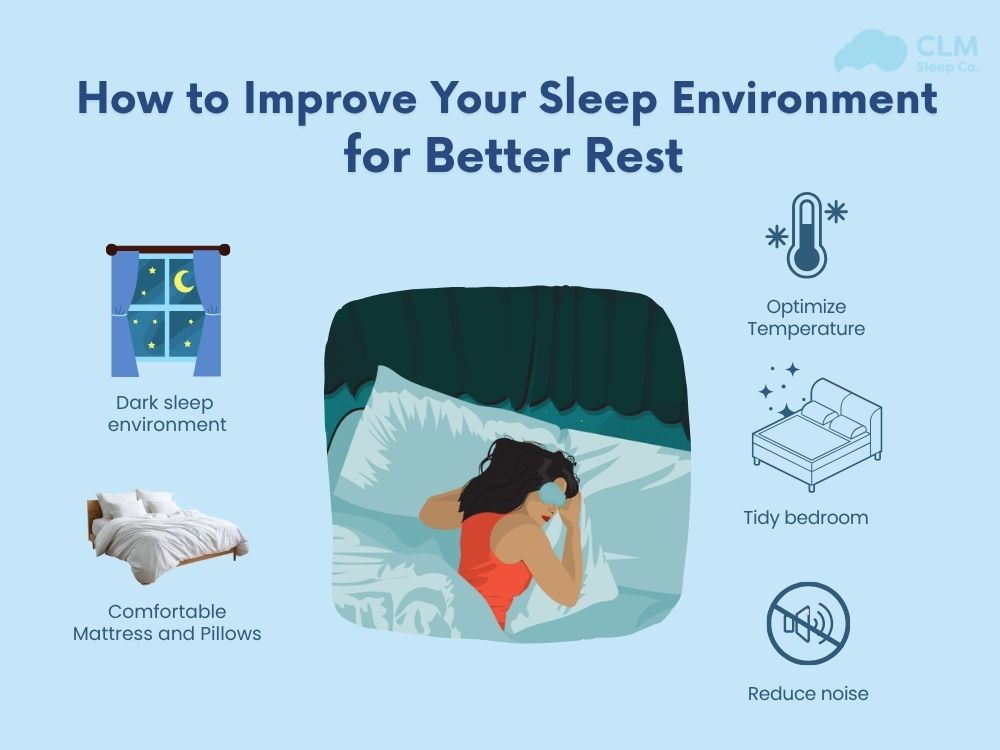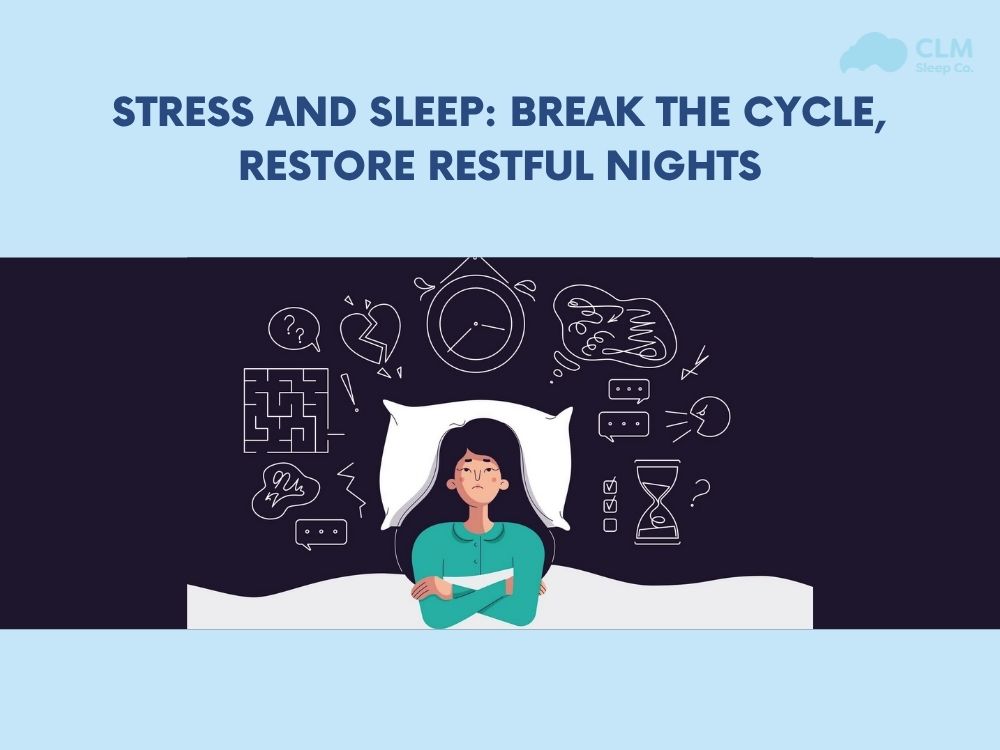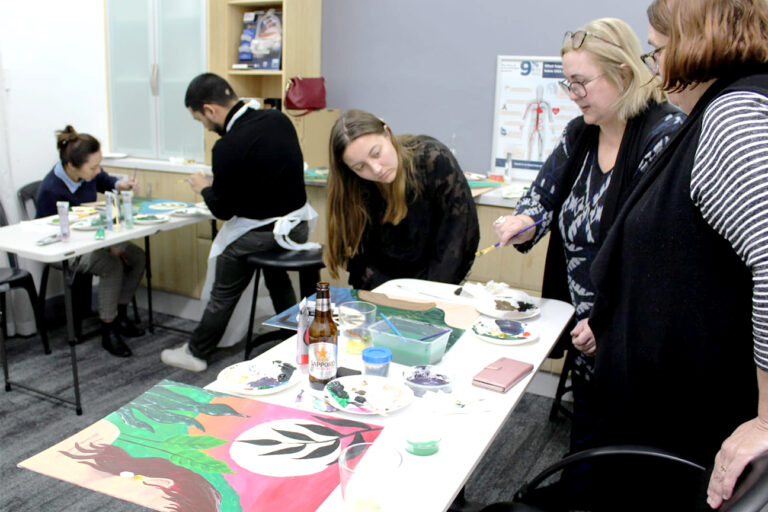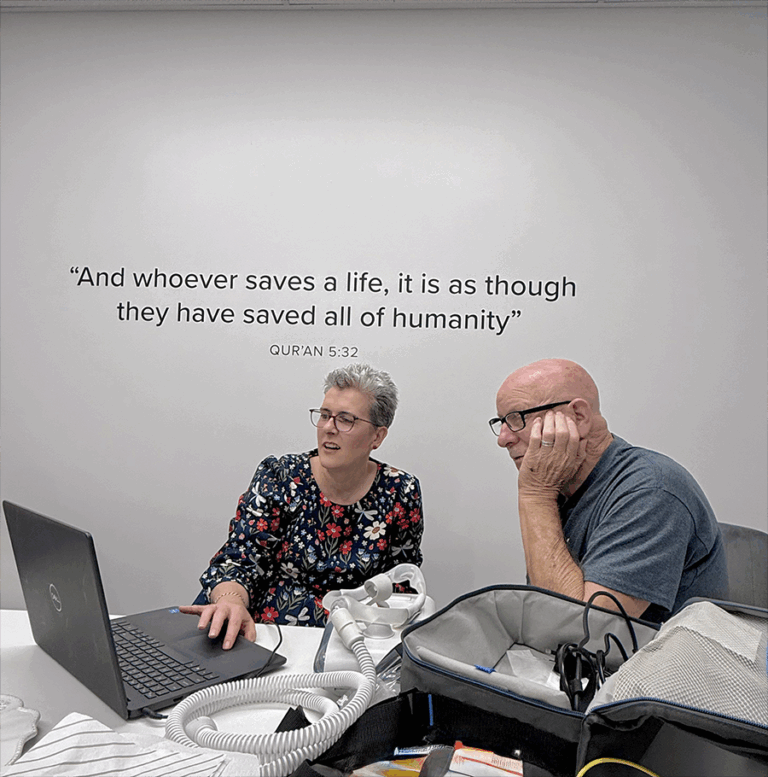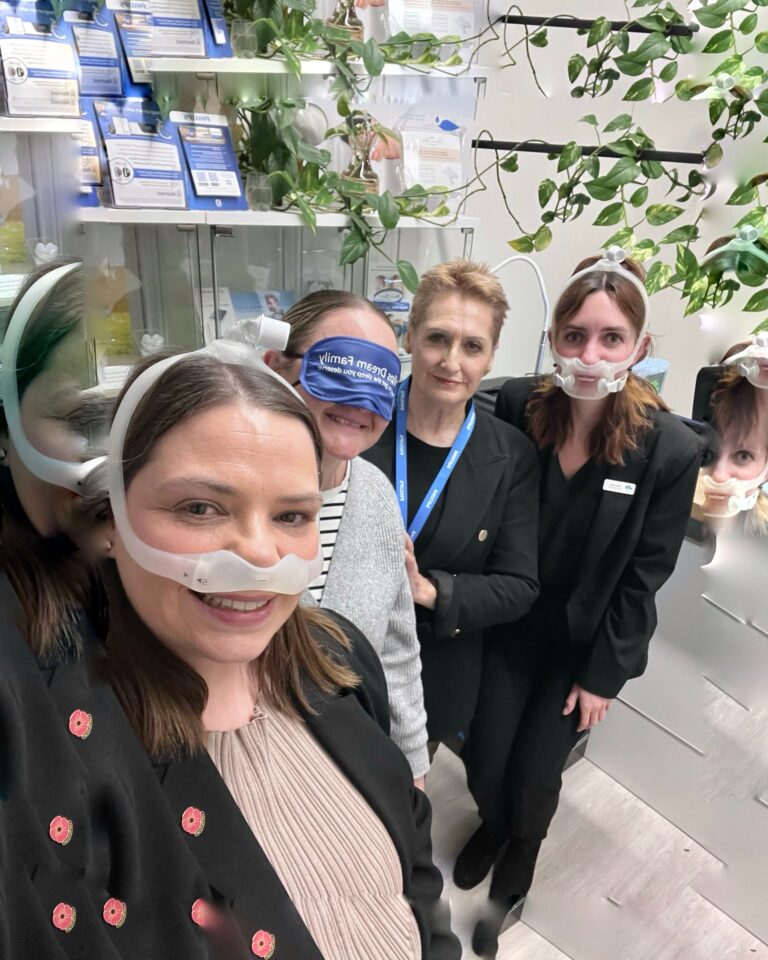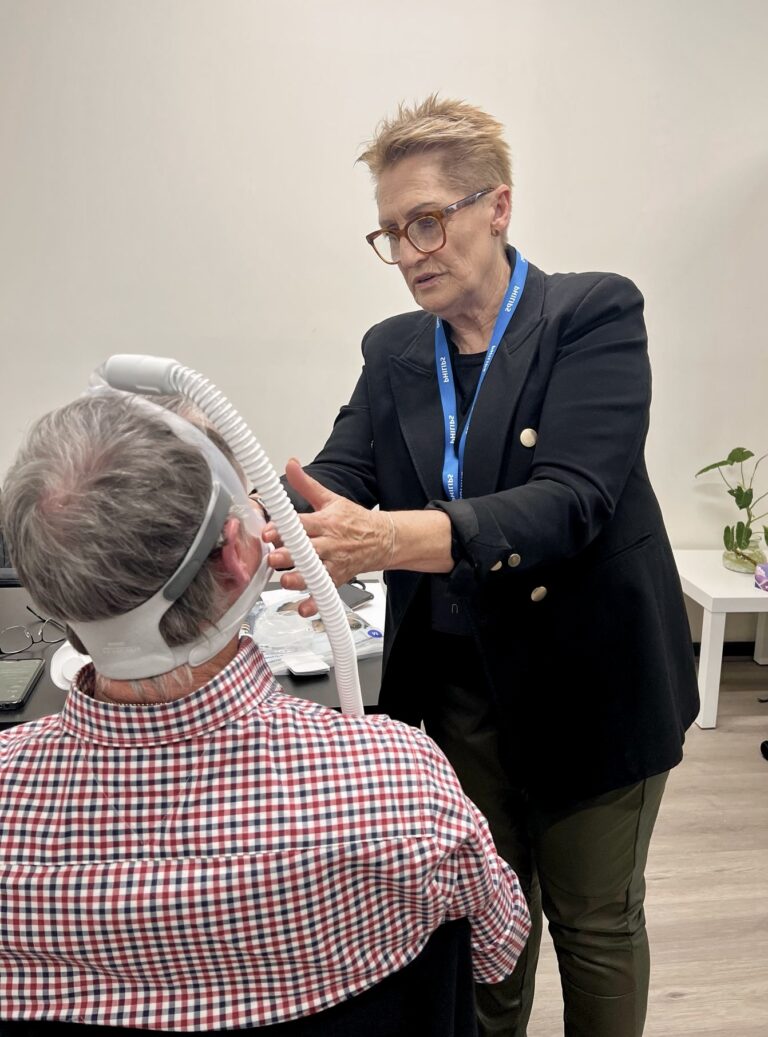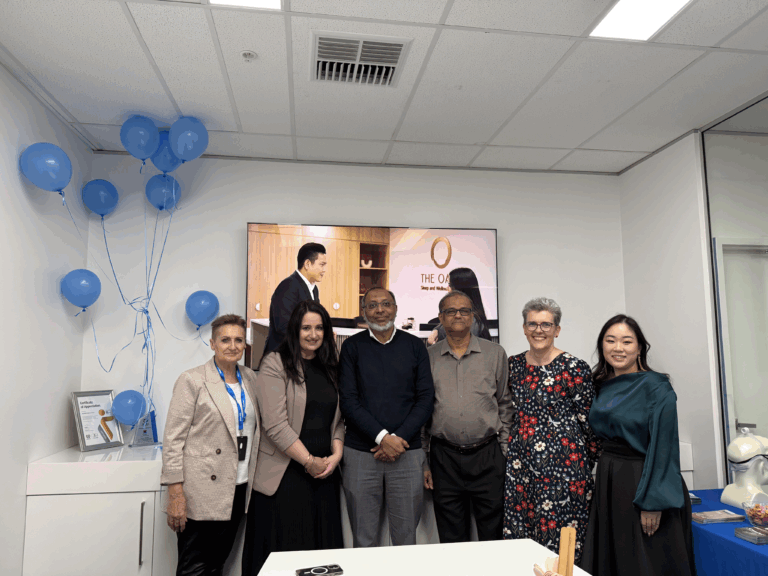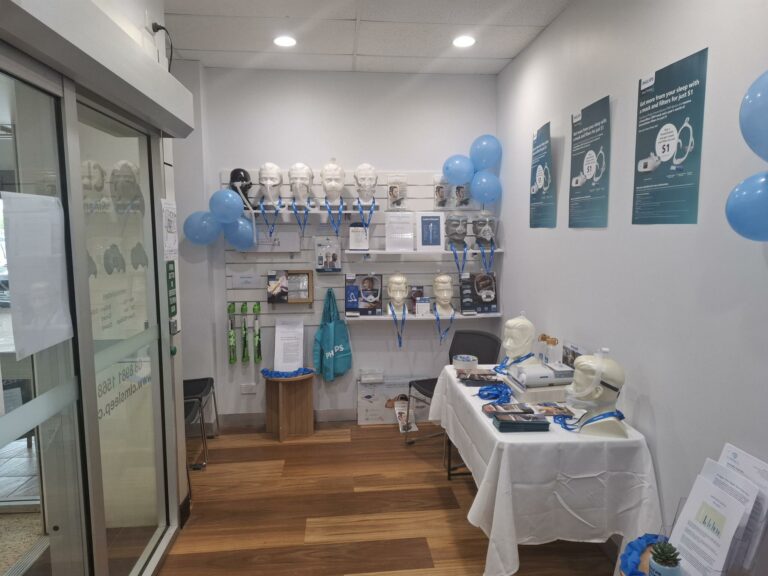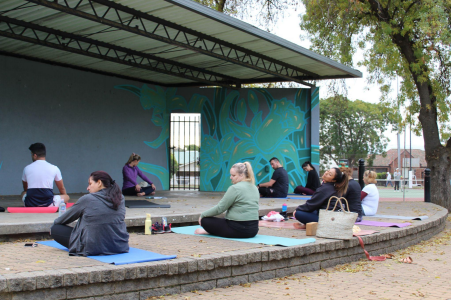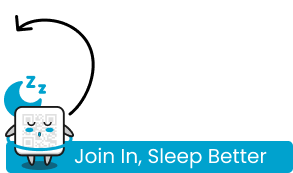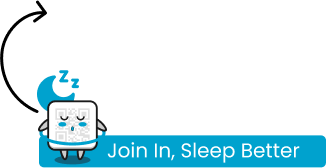Is daytime sleepiness a warning sign? Yes, excessive daytime sleepiness can be a warning sign of poor sleep quality, sleep disorders, mental health conditions or underlying health problems. Feeling tired and sleepy after a night of sleep deprivation is normal. However, if you’ve had enough sleep and this condition persists and affects your life, it’s time to take a closer look at your health. Let’s learn more with CLM Sleep about the signs of excessive daytime sleepiness, its causes, and how to control it.
What is excessive daytime sleepiness?
Excessive daytime sleepiness (EDS), often called daytime somnolence, is a common symptom of sleep disorders, particularly hypersomnia, sleep apnea, narcolepsy, and chronic insomnia. It is a condition that makes it difficult to stay awake or causes you to feel constantly sleepy during the day, especially falling asleep while studying, working, or even driving. Along with that comes a feeling of fatigue, difficulty concentrating, and difficulty controlling emotions. When this condition occurs at least three times per week and persists for at least three months, excessive daytime sleepiness can be considered a common clinical sign in sleep disorders (DSM-5; ICSD-3).
Excessive daytime sleepiness is a central symptom of hypersomnia, meaning people with hypersomnia often experience excessive sleepiness during the day. Many people mistakenly believe that excessive daytime sleepiness is the same as hypersomnia, but they are not. EDS is merely a symptom that can appear in various sleep-related disorders or conditions, while hypersomnia is a distinct sleep disorder diagnosed based on clinical criteria, with EDS being its most prominent manifestation. In sleep apnea, ESD is also a common symptom, appearing in approximately 39.9% of patients.
Read more: How Many Hours of Sleep Do We Really Need?
How does it affect daily life?
Many people assume that EDS has little impact on daily life. However, EDS is not simply a state of “sleepiness”. If it persists, it can disrupt your life, hinder your ability to achieve your goals, and impede your personal development. Some effects of excessive daytime sleepiness on daily life include:
- Reduced quality of life: you frequently feel tired, sluggish, and uncomfortable.
- Difficulty concentrating and reduced memory: easily forgetting things, difficulty maintaining attention in studies or work.
- Reduced learning and work performance: decreased productivity, prone to errors.
- Affects decision-making and problem-solving abilities: difficulty thinking clearly, slower processing of situations.
- Danger when operating machinery or driving: the risk of accidents increases due to drowsiness while driving or working.
- Impact on social and family relationships: irritability, less energy for communication, which in turn diminishes the quality of relationships.
Recognizing Excessive Daytime Sleepiness
If you experience excessive daytime sleepiness, you may:
Sleep-related symptoms:
- Morning sleepiness
- Unintended sleep episodes
- Persistent fatigue
Mood and emotional changes:
- Mood disturbances
- Increased irritability
Cognitive and behavioral effects:
- Difficulty staying alert
- Memory issues
- Trouble concentrating
- Challenges in retaining new information
- Difficulty making decisions
- Slower reaction times
- Engaging in risk-taking behaviors
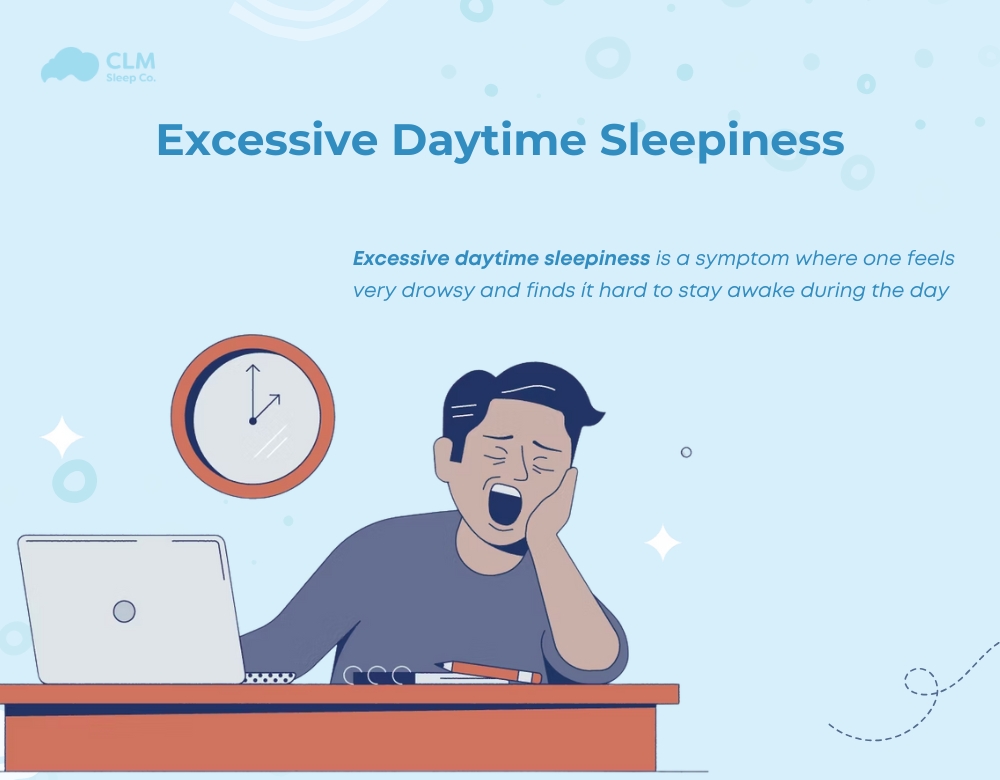
What causes excessive sleepiness in the daytime?
Excessive daytime sleepiness is caused by various medical conditions, lifestyle factors, and sleep disorders. Understanding these causes is essential for effective diagnosis and treatment.
Sleep Apnea
Sleep apnea is a common sleep disorder, consisting of short pauses in breathing, lasting from a few seconds to several dozen seconds, repeating during sleep. This disrupts sleep, preventing the body from entering deep sleep and REM sleep, leading to prolonged sleep deprivation. And this is also the cause of excessive daytime sleepiness. This symptom can appear in both OSA, which is obstructive sleep apnea caused by airway obstruction, and CSA, which is central sleep apnea caused by the respiratory system not receiving breathing signals from the brain.
Besides excessive daytime sleepiness, common sleep apnea symptoms include: snoring, pauses in breathing while sleep, morning headaches, and difficulty concentrating. Additionally, obesity, type 2 diabetes, heart disease, and mental health are risk factors or associated conditions.
Hypersomnia
Hypersomnia is a sleep disorder that causes you to sleep a lot (more than 9–10 hours), but the body still does not get restored. Accompanying this is the symptom of excessive daytime sleepiness, and even if you sleep a lot, you still feel tired, drowsy, and have difficulty waking up in the morning. Hypersomnia is usually divided into two types: Primary hypersomnia, whose cause is not clearly identified, and Secondary hypersomnia, which is due to the influence of other medical conditions and external factors such as medications, stimulants, …
Narcolepsy
Narcolepsy is a severe sleep disorder that causes excessive daytime sleepiness and sudden sleep attacks, even while engaging in activities. It is accompanied by characteristic symptoms such as temporary loss of muscle control (cataplexy), hallucinations while falling asleep or upon waking, and temporary paralysis of the body during sleep. Narcolepsy is a type of neurological disorder that regulates sleep, associated with a deficiency of hypocretin (a hormone/neuropeptide in the brain responsible for keeping the body awake and regulating the sleep–wake cycle) and REM sleep disturbances.
| Criteria | Hypersomnia | Narcolepsy |
| Main symptoms | Continuous, prolonged, sleeps a lot (>9–10 hours) | Sudden, uncontrollable, can fall asleep during activities |
| Associated symptoms | Difficulty waking up in the morning, fatigue, lack of alertness | Cataplexy , hallucinations while falling asleep or upon waking, temporary sleep paralysis |
| Nighttime sleep | Long sleep but non-restorative, normal REM sleep | REM sleep occurs early, REM sleep disturbances |
| Causes | Primary: unknown cause; Secondary: due to other medical conditions or external factors (medications, stimulants, etc.) | Hypocretin deficiency in the brain, neurological disorder regulating sleep |
| Key distinguishing feature | Sleeps a lot but no cataplexy or REM-specific disturbances | Sudden sleep attacks, cataplexy, and clear REM sleep disturbances |
Circadian Rhythm Sleep Disorders
Circadian rhythm disorders occur when the body’s internal clock is misaligned with external cues, such as light and activity. Examples include:
- Shift work disorder: Irregular working hours disrupt natural sleep-wake cycles.
- Jet lag: Traveling across time zones can temporarily interfere with the body’s clock.
These disruptions compromise sleep quality, causing fatigue and drowsiness.
Read more: Irregular Sleep Wake Rhythm
Restless Legs Syndrome (RLS)
RLS causes uncomfortable sensations in the legs, often described as crawling or tingling, which create an irresistible urge to move them. This restlessness, especially at night, disrupts sleep and leads to daytime fatigue and sleepiness.
Neurological and Psychological Conditions
Certain neurological and mental health conditions can interfere with sleep, leading to EDS:
- Neurological disorders: Diseases like Parkinson’s and Alzheimer’s often cause sleep disturbances.
- Psychological conditions: Anxiety, depression, and post-traumatic stress disorder (PTSD) can make it difficult to fall or stay asleep, resulting in fatigue.
Read more: Why Sleep Is Important for Brain Health?
Chronic Sleep Deprivation and Poor Sleep Habits
Busy schedules, irregular sleep patterns, or poor bedtime habits can lead to chronic sleep deficits. Factors contributing to this include:
- Overuse of stimulants like caffeine or alcohol close to bedtime, which disrupts sleep quality.
- Excessive screen time delays the natural onset of sleep.
Medication Side Effects
Some medications induce drowsiness as a side effect, contributing to EDS. These include:
- Antihistamines: Often used for allergies, they can cause sedation.
- Sedatives and Sleep Aids: While intended to promote sleep, they can leave a lingering sedative effect the next day.
- Antidepressants: Certain types may cause fatigue and interfere with daytime alertness.
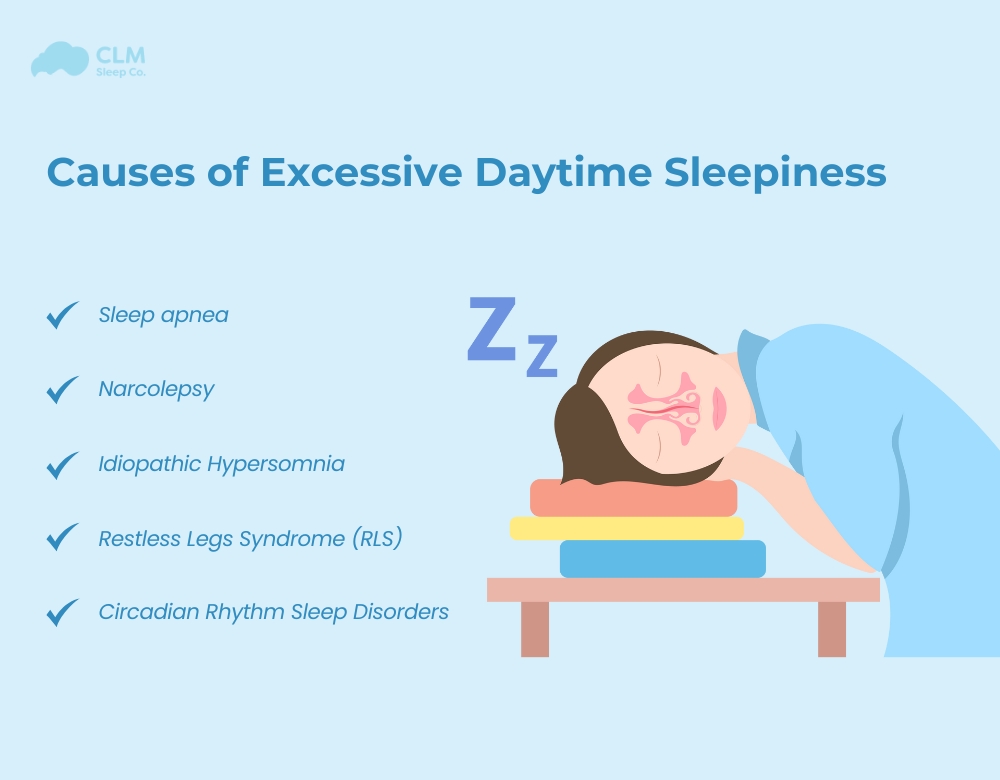
Diagnostic Methods
Diagnosing excessive daytime sleepiness (EDS) requires a thorough evaluation using various methods to determine the underlying cause. Accurate identification allows for targeted treatment, improving overall well-being and quality of life. Here are the key steps involved in the diagnostic process:
Medical History and Sleep Patterns
Doctors begin by gathering a detailed medical history and understanding the patient’s sleep patterns:
- Sleep routines: Patients are asked about their typical bedtime, wake time, and quality of sleep to identify irregularities.
- Lifestyle habits: Habits such as caffeine or alcohol consumption, exercise routines, and screen time before bed are analyzed to uncover potential sleep disruptors.
- Medical history: Any history of chronic illnesses, medications, or family history of sleep disorders is considered to pinpoint contributing factors.
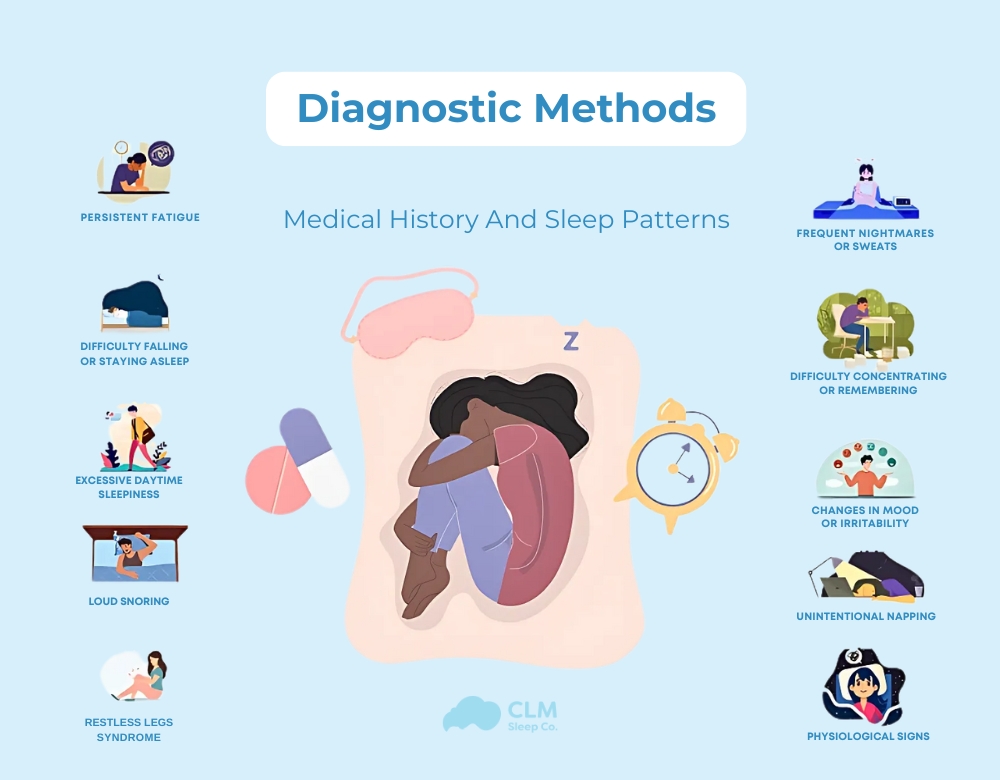
Polysomnography
Polysomnography, commonly known as a sleep study, is an overnight test performed in a sleep clinic or laboratory to diagnose sleep disorders. It monitors various physiological activities, including brain activity (EEG), breathing patterns, oxygen levels, heart rate, and muscle movements throughout the night.
This test is crucial for detecting conditions such as obstructive sleep apnea (OSA), central sleep apnea (CSA), and other sleep-related abnormalities that may cause excessive daytime sleepiness. By providing comprehensive data, polysomnography plays a significant role in confirming or ruling out potential conditions, enabling accurate diagnosis and effective treatment planning.
See more: AHI – Measures the severity of sleep apnea
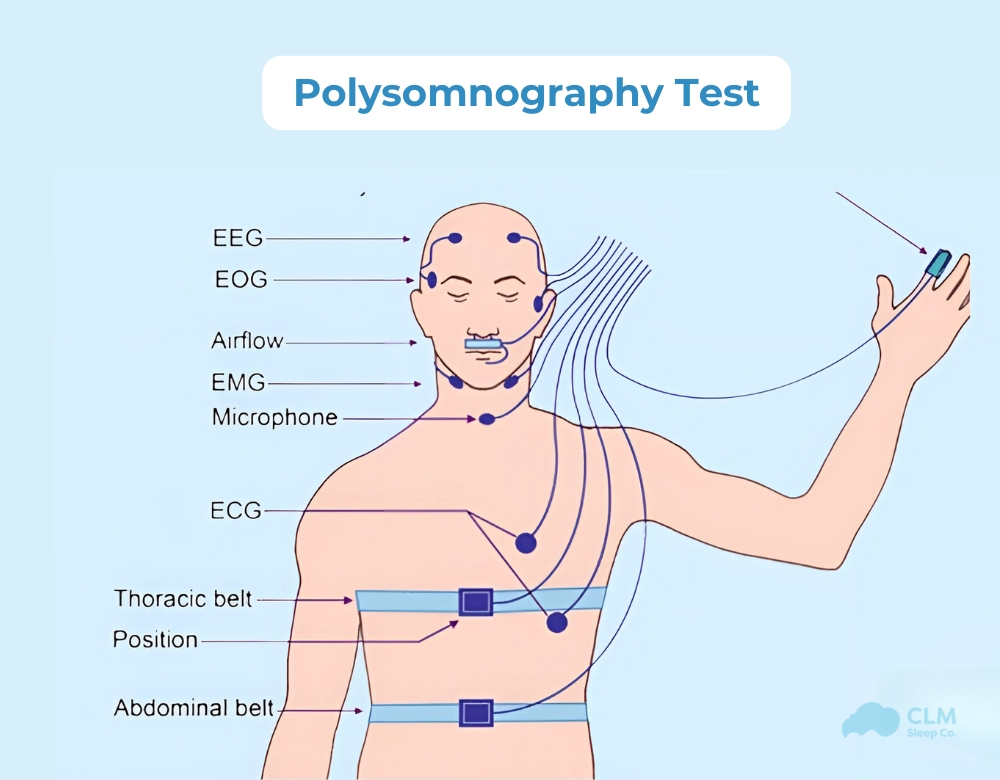
Multiple Sleep Latency Test (MSLT)
The Multiple Sleep Latency Test (MSLT) evaluates how quickly a person falls asleep during the day, providing valuable insights into the severity of daytime sleepiness. During the test, patients take scheduled naps every two hours, and the time it takes to fall asleep (sleep latency) is measured.
This test is particularly effective in diagnosing conditions like narcolepsy and idiopathic hypersomnia. Key indicators include short sleep latency and the rapid onset of REM sleep, which are hallmark signs of narcolepsy. The MSLT is an essential tool for identifying and understanding excessive daytime sleepiness.
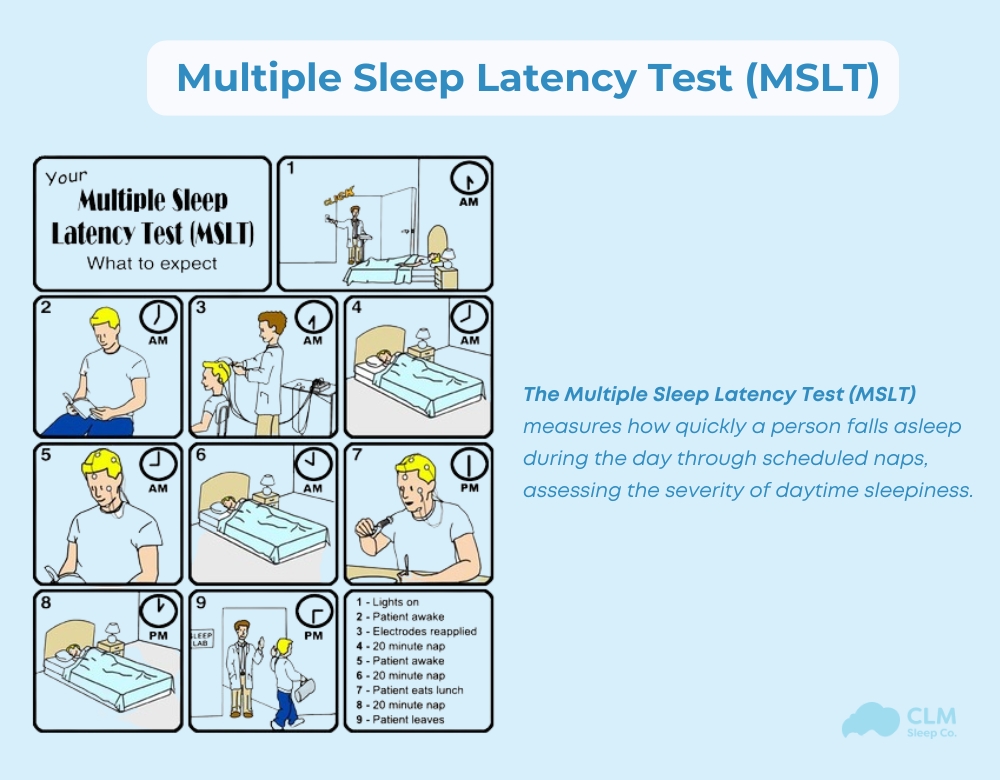
Epworth Sleepiness Scale
The Epworth Sleepiness Scale is a quick self-reported questionnaire where patients rate their likelihood of falling asleep in everyday situations like reading or sitting in traffic. It quantifies the severity of daytime sleepiness and helps determine the need for further testing. As a simple and effective screening tool, it complements more comprehensive diagnostic methods.
See more: Sleep Apnea Diagnosis
Treatment for Excessive Daytime Sleepiness
Effective treatment of EDS focuses on addressing its root causes while incorporating lifestyle changes:
Addressing Underlying Causes
The first step in managing EDS is to treat the medical conditions contributing to it:
- Sleep Apnea: Continuous positive airway pressure (CPAP) therapy is a common and effective treatment for sleep apnea. It keeps the airway open during sleep, improving oxygen levels and sleep quality, which reduces daytime sleepiness.
- Restless Legs Syndrome (RLS): Medications such as dopaminergic agents or anticonvulsants can help manage RLS symptoms, promoting better sleep.
- Narcolepsy or Hypersomnia: Doctors may prescribe medications to regulate sleep-wake cycles and control sudden sleep attacks.
Lifestyle Modifications
Making changes to daily habits and routines is critical for combating excessive daytime sleepiness:
- Maintain a Consistent Sleep Schedule: Going to bed and waking up at the same time each day, including weekends, helps regulate your internal clock.
- Avoid Stimulants Before Bedtime: Limit the consumption of caffeine, nicotine, and alcohol in the evening, as these can interfere with falling and staying asleep.
- Create a Calming Bedtime Routine: Engage in activities like reading, meditation, or listening to soothing music before bed to signal your body that it’s time to relax.
- Regular Exercise: Incorporating moderate physical activity into your routine improves overall sleep quality. However, avoid vigorous exercise close to bedtime, as it can have a stimulating effect.
See more: Effective Ways to Heal Sleep Apnea Naturally for Better Health
Supportive Treatments
In addition to treating the underlying causes and improving sleep hygiene, supportive therapies can help manage persistent EDS symptoms:
- Wake-Promoting Medications: Drugs like modafinil or armodafinil are prescribed to improve wakefulness in individuals with conditions like narcolepsy or residual sleepiness despite other treatments.
- Cognitive Behavioral Therapy (CBT): This form of therapy helps address psychological factors that may be disrupting sleep, such as stress, anxiety, or negative thoughts about sleep.
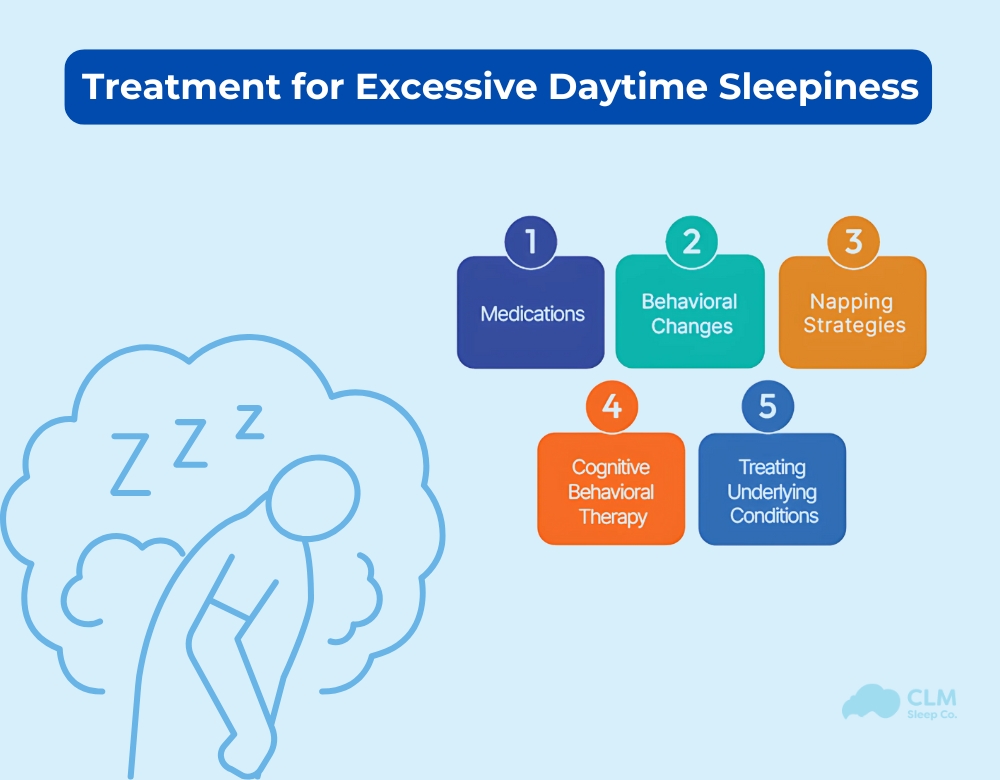
Preventive Measures for Excessive Daytime Sleepiness
Excessive daytime sleepiness (EDS) can significantly impact daily life, but proactive measures can help prevent it. By adopting healthy sleep habits and creating a conducive environment for quality rest, you can maintain alertness and energy throughout the day.
- Prioritize 7-9 hours of sleep: Maintain a consistent sleep schedule with 7-9 hours of rest each night, even on weekends, to regulate your internal clock and improve sleep quality.
- Reduce screen time and stimulants: Avoid screens at least an hour before bed, as blue light delays melatonin production. Limit caffeine, nicotine, and alcohol in the evening to improve rest.
- Optimize your sleep environment: Ensure your room is quiet, dark, and comfortable. Use earplugs, blackout curtains, and a supportive mattress to create the perfect sleeping conditions.
- Practice relaxation techniques: Incorporate mindfulness meditation, deep breathing, or muscle relaxation exercises into your routine to reduce stress and prepare for restful sleep.
Read more: How to Prevent Sleep Apnea
Conclusion of the article
Excessive daytime sleepiness is more than just feeling tired. It’s a condition that can significantly impact your quality of life and overall health. By understanding the causes, recognizing the symptoms, and seeking timely diagnosis and treatment, you can regain control of your energy and daily productivity.
If you’re experiencing persistent daytime sleepiness, it’s essential to address the underlying issues. Explore diagnostic options with CLM Sleep Services to uncover the root cause and take the first step toward better sleep health. For effective treatment solutions, including CPAP devices and accessories, visit CPAP Discount. Don’t let excessive daytime sleepiness hold you back—take action today for a healthier, more energized tomorrow.
Reference
- Salari N, Gholami A, Jalili F, Zereshki E, Heidarian P, Shohaimi S, Mohammadi M, et al. Global Prevalence of Excessive Daytime Sleepiness in Patients with Obstructive Sleep Apnea: A Systematic Review and Meta-Analysis. Indian Journal of Otolaryngology and Head & Neck Surgery. 2025 Jan;77(1):216-223. doi:10.1007/s12070-024-05146-0. PMID:40066425.
- Bonsignore MR, Pepin JL, Cibella F, et al. Excessive Daytime Sleepiness in Obstructive Sleep Apnea Patients Treated With Continuous Positive Airway Pressure: Data From the European Sleep Apnea Database. Frontiers in Neurology. 2021 Aug 9;12:690008. doi:10.3389/fneur.2021.690008. PMID:34434158.
- Waldman LT, Parthasarathy S, Villa KF, Bron M, Bujanover S, Brod M, et al. Understanding the burden of illness of excessive daytime sleepiness associated with obstructive sleep apnea: a qualitative study. Health and Quality of Life Outcomes. 2020 May 7;18:128. doi:10.1186/s12955-020-01382-4.
- Weaver TE, Pepin J-L, Schwab R, et al. Long-term effects of solriamfetol on quality of life and work productivity in participants with excessive daytime sleepiness associated with narcolepsy or obstructive sleep apnea. Journal of Clinical Sleep Medicine. 2021 Oct;17(10):1995-2007. doi:10.5664/jcsm.9384. PMID:34606437.
- Ohayon MM, Dauvilliers Y, Reynolds CF 3rd. Operational definitions and algorithms for excessive sleepiness in the general population: implications for DSM-5 nosology. Arch Gen Psychiatry. 2012 Jan;69(1):71-9. doi:10.1001/archgenpsychiatry.2011.1240. PMID: 22213791; PMCID:PMC3298734.
